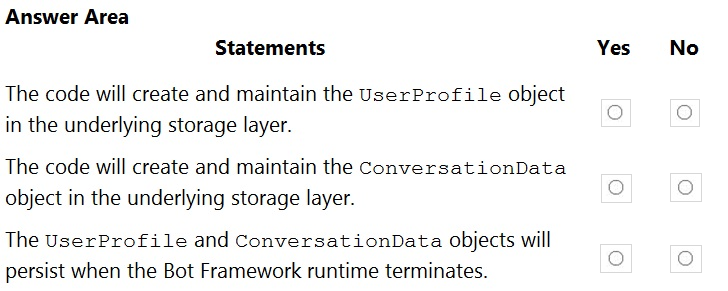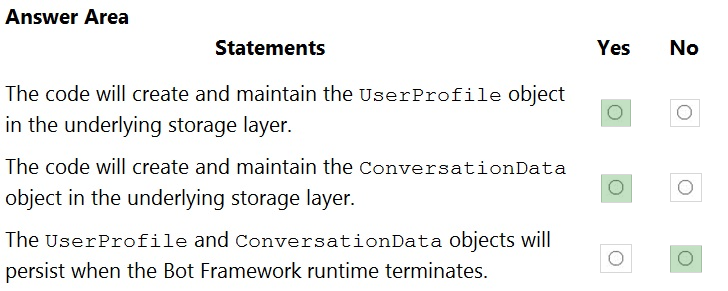

HOTSPOT -
You are building a chatbot by using the Microsoft Bot Framework SDK.
You use an object named UserProfile to store user profile information and an object named ConversationData to store information related to a conversation.
You create the following state accessors to store both objects in state. var userStateAccessors = _userState.CreateProperty<UserProfile>(nameof(UserProfile)); var conversationStateAccessors = _conversationState.CreateProperty<ConversationData>(nameof(ConversationData));
The state storage mechanism is set to Memory Storage.
For each of the following statements, select Yes if the statement is true. Otherwise, select No.
NOTE: Each correct selection is worth one point.
Hot Area:

zellck
Highly Voted 1 year, 10 months agozellck
1 year, 10 months agordemontis
1 year, 5 months agoVoxo
Highly Voted 3 years, 5 months agosyupwsh
Most Recent 2 months, 2 weeks ago3fbc31b
5 months, 1 week agoHaraTadahisa
10 months, 1 week agotakaimomoGcup
10 months, 2 weeks agovarinder82
1 year, 1 month agoMehe323
1 year, 1 month agosl_mslconsulting
1 year, 6 months agodimsok
1 year, 3 months agokail85
1 year, 10 months agokail85
1 year, 10 months agoflutterb
2 years, 5 months agoninjapunk
2 years, 4 months ago